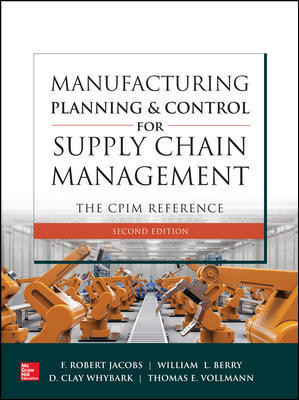
Four processes-metal machining, welding, casting and electrical discharge machining (EDM)-are key manufacturing foundations for industries such as aerospace, medical equipment, automotive, heavy equipment and power generation. The evolution of these four processes has brought ever-increasing technological sophistication to the plant floor and to quality assurance.
A common quality-assurance practice for parts and components made via these processes remains relatively low-tech: visual inspection. That is not to say technology does not enter into visual inspection. Borescopes, based on sophisticated and technologically advanced optical systems, are frequently manufacturers' first choice in inspecting mission-critical parts or components.
A vast array of parts manufactured by any one of the aforementioned four processes can be, and often need to be, inspected with borescopes. Borescopic inspection becomes imperative for parts made by these four processes when the following factors exist:
• The area to be inspected is difficult to access. Borescopic inspection probably is not necessary to inspect shallow holes in a manifold that are easily examined by eye or using a loupe. But deep bores, cross holes or undercuts in the same manifold require borescopic inspection to determine surface finish and other key characteristics.
• The part or component is mission critical, for instance, mating surfaces with a gasket between them that might prevent leakage in a fuel system.
• The specified characteristics are not well defined such as rust, blockages and debris. In situations such as these, there is no substitute for the human brain making subjective judgments. A machine vision system can identify certain characteristics-reflectance, edges or quantity-but cannot interpret unusual anomalies.

Scopes Play Specific Roles
Borescopes play specific roles in visual inspection, roles dictated by the quality issues inherent in the manufacturing process. However, a general rule applies. Rigid borescopes offer better resolution, brighter images and greater durability and cost less than flexible borescopes. When the option exists, rigid scopes are the better choice.EDM is frequently used for parts that have strange geometries or small details that do not lend themselves to normal machining, such as fuel injector nozzles and hydraulic sleeves. Visual inspectors of EDM'd parts or components are typically looking at the roughness of a surface-how well the material has been melted away by the electron beam. In these situations, rigid scopes are usually the tool of choice.
Aircraft engine oil coolers, power-generation and chemical-processing systems, and pharmaceutical processing equipment all contain welds and welded tubes. Inspectors of welds usually look for weld continuity or strength at a heat-affected zone. Most stainless steel tubing, such as hypodermic needles, is made through the welded and drawn process, where the welded seam needs to be inspected for smoothness and integrity. Tubing often requires the use of flexible borescopes for visual inspection.

Metal machining touches nearly every part of an auto engine-brake manifolds or fuel injector bodies and nozzles-valves in medical instruments; and manifolds, valves, sleeves, cylinders and spools in hydraulic systems. Metal machining problems can include burrs, surface finish irregularities and contaminants.

Applications
In many instances, products and their component parts are made with more than one manufacturing process. Turbine engines are the foundation of the power-generation industry. Turbine blades are complex castings; the igniter and fuel nozzles-part of the burner can-are machined parts; the burner can itself is a welded system. Other applications demonstrate that parts and assembled products both are candidates for borescopic inspection. A designer and manufacturer of engines, including turbo-shaft engines for helicopters, had a backlog of 3,000 helicopter fuel control units needing inspection. Each unit required hours to disassemble and reassemble. By using rigid borescopes to inspect the units without disassembly, the firm quickly eliminated the backlog. It now uses the scopes for routine inspection every 800 hours. The result is increased helicopter safety and reliability at a lower cost.A defense contractor uses both rigid and flexible borescopes to inspect hypergolic rocket engines. Inspectors look at mixing nozzles that mix fuel and look for pitting and scarring inside the missile thrust chamber. Another defense contractor uses both rigid and flexible scopes to detect foreign objects, contamination burrs and other irregularities in castings, and machined parts and components such as small detail castings and attach holes.
Machinists at a company that designs and manufactures precision-machined automotive parts use rigid borescopes to check for burrs and imperfections in hard-to-see interiors of automotive-transmission turbine shafts. The scopes can see deep inside a part where a problem such as an incomplete drill hole could cause catastrophic transmission failure. Scopes also help the plant's manufacturing engineers optimize the setup process, reducing errors and scrapped parts. They can now check parts as they come off the line to verify all the specifications. Catching problems early in the process cuts costs in time, labor and materials.

Often, a common theme among these applications is fluid flow. Fuel, hydraulic fluid, water, oil, medication-the parts through which any of these vital fluids flow must be free of burrs and contaminants that can clog and possibly limit the flow. The parts also must not have cracks through which fluid could leak. Hydraulic systems must maintain pressure to work correctly, and that pressure can be compromised by the loss of fluid.
Multiple Benefits
The benefits of using borescopic inspection in the welding, casting, EDM and metal machining processes are numerous. Unlike destructive testing, borescopic inspection does not require tearing down and damaging parts. Destructive testing in the aerospace industry can be particularly problematic because of the low volumes and high costs of many of the parts involved.More and more manufacturers are instituting 100% inspection policies. The strict quality control is necessary because, in almost every instance, the parts are mission critical, and manufacturers want assurance that not one defective part will pass out of their facility. Destructive testing is impossible with such constraints and other methods require too much time to test every part that comes off a line.
There is no substitute for the human eye and brain working together. The combination allows the inspector to identify and evaluate issues that other, more high-tech inspection processes such as X-ray, machine vision and eddy current simply cannot. Inspectors identify quality issues that are difficult to pick up even on video. They can see color, texture and other qualities of a part or surface that are not apparent with other inspection systems.
As borescopes become more affordable, manufacturers can use them more often on the plant floor. The advantage is time. Companies do not have to stop a production line to inspect a part in the quality lab, nor do they have to return to the floor to stop the line if they detect a problem. Manufacturing engineers or machine operators can test items right off the line, allowing for faster decisions on how to correct any problems uncovered. Using X-rays to inspect the head of a car engine could take up to 16 hours; borescopic inspection takes just seconds.
Testing techniques such as X-rays and eddy current require trained personnel to operate the equipment and interpret the data. Borescopic inspection is easy to learn and requires minimal training. What inspectors see through a scope is usually easily recognizable, requiring no interpretation or guesswork. NDT

